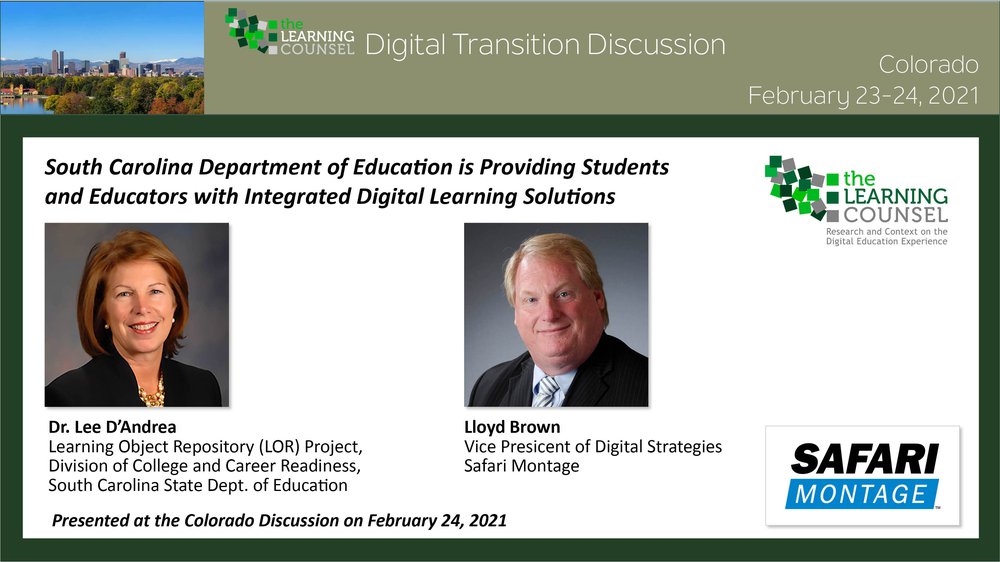In a very forward-thinking move, the state of South Carolina, with help from SAFARI Montage, is providing students and educators with centralized, integrated digital learning solutions. According to Lloyd Brown, Vice President of Digital Strategies at SAFARI Montage, “From my viewpoint of being an ex CIO for Baltimore County Public Schools, and now being the VP for Digital Strategies at SAFARI, we really need to start looking at equity across the board, making sure all teachers, all students have access to digital content and inside our Learning Object Repository, we're making that happen.”
“We had to make it simple,” said Brown. So, when I say simple, that means I'm integrating with your existing ecosystem and not having to make teachers learn more or learn something different. So one of the reasons that I'm happy to be with South Carolina is they have offered a learning management system of five different learning management systems out to the whole state. So we, as the learning object repository, have integrated with all those LMSs. So now the teachers aren't learning something new, they're just going out to this vetted material that we've provided and South Carolina is providing to the students. And they're able to sit there and get it and make sure that it's vetted by the state, but also by the district.”
Dr. Lee D’Andrea of the Learning Object Repository (LOR) Project, Division of College and Career Readiness at the South Carolina State Dept. of Education says, “I am very happy to say that it has become a systemic partnership with Safari montage, building what we call our digital ecosystem in South Carolina. Our state superintendent is very much of a systems thinker and pre pandemic, which seems like to me a long time ago, we had actually identified as a result of a pilot project that had been funded by the general assembly. There, we identified three large categories that were necessary in building a digital ecosystem. You have to have vision and leadership. And that has to do with expectations, financial planning, human resource planning, and being able to do the data analysis on the return on the investment for the different components and the technical infrastructure where I'll spend most of the time today. The other piece is clearly the human resources and the professional development.”
Don’t miss the fascinating look at building an integrated digital learning solution. You are sure to learn new strategies that you can take home to your own state or district.











